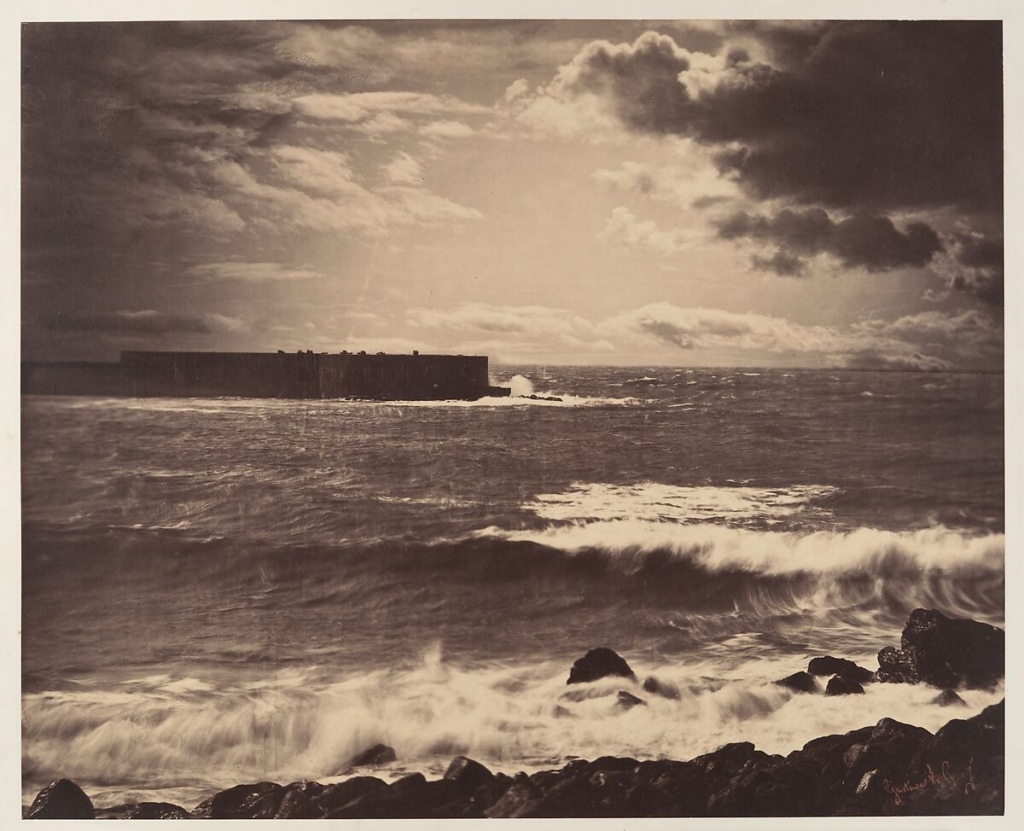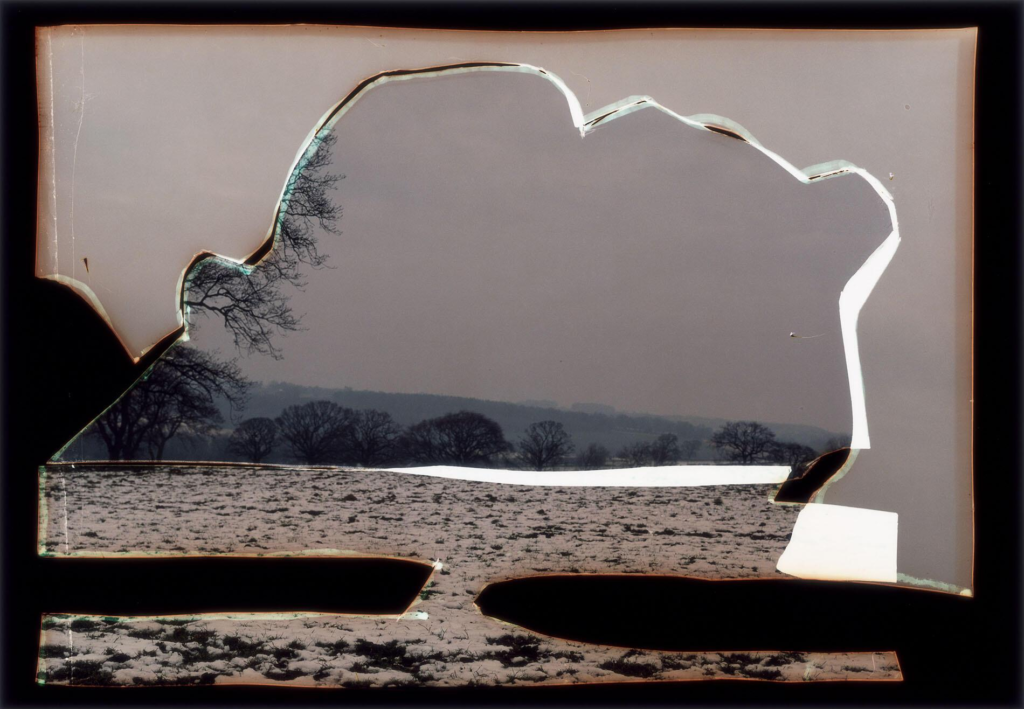
Gustave le Gray was born in 1820 in Val-d’Oise France and was a central figure in French photography know for his technical innovations in photography such as his improvement on paper negatives and the wet collodion method to create a print on a glass plate. his image “The Great Wave” is an example of ‘constructed seascape’ it has the sea taken from one photo and the sky from another melded together.
Dafna Talmor created seascapes by collaging and montaging colour negatives.

Both could be described as a landscape. What landscapes do they describe?
Gustave le Gray creates realistic landscapes that look as if they go together creating a sense of grandeur and have a more romantic approach. Whilst Dafna Talmor’s focuses more on the shape of the rift created to stick them back together, with plain and desolate landscapes in the background. Both photographers feature the sea in their work creating seascapes from multiple images.
What differences do you notice?
Dafna Talmor created defined lines where it is apparent that the photo has been altered leaving negative space between images to create abstract shapes and patterns where as Gustave le Gray used what he called Combination printing using one image of the sea and another of the sky and blending them seamlessly into one another. Gustave also took more classic landscape images whilst Talmor takes closer abstract images creating desolate looking landscapes.
What similarities do you notice?
Both photographers create new landscapes by splicing negatives together. The sea is a prominent feature in both photographers work.
